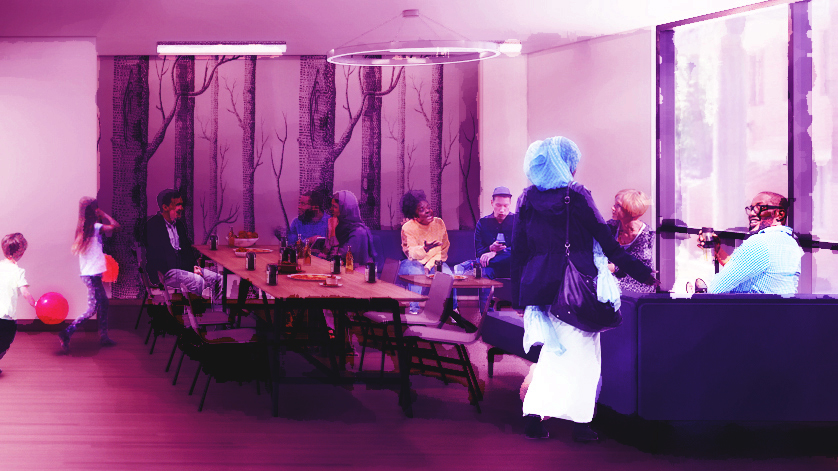A Tenant-first Service Model Expressed Through New Service Hubs
The Toronto Community Housing Corporation (TCHC) has a massive portfolio. As the largest social housing provider in Canada, and the second largest in North America, it’s responsible for 60,000 rental units in over 2,100 buildings that are home to more than 100,000 residents.
In 2019, the TCHC took a hard look at how it was delivering service. Their goal was to implement a plan that would improve tenants’ lives through better service delivery. The result was an ambitious effort to decentralize frontline services from head offices to 83 hubs across the greater Toronto area – an approach designed to help tenants get their needs met quickly and respectfully where they live.
Architecture Counsel joined the project, with the challenge of creating eight of these hubs. “On the surface, this is about consolidating a service model, so a tenant has a place to go for support services, to discuss rent issues or log a maintenance need,” says Oliver Beck, Principal of Architecture Counsel. “But this group is one of highest-needs, vulnerable sectors of the population. They have issues that a typical landlord would not face. Those needs became paramount in the design.”
Putting the Tenant at the Centre of Engagement
The vision for the hubs was to create spaces that embodied the new tenant-centred values and service delivery model of the TCHC, putting residents needs at the centre of everything the housing provider does. The TCHC wanted welcoming, accessible places that made it easy on tenants to get services and help, and to have a voice – with a model that noticeably improved service levels.
“The hubs are a powerful statement from the TCHC,” says Beck. “They struggled for a long time trying to determine whether they were a landlord or a social service provider. These hubs clearly say that the identity crisis is over. As social service provider, they are taking service to heart and delivering it directly to their tenants.”
Designing with the tenant in-mind meant seeing the whole gamut of resident needs – including generation, gender, culture, beliefs and mental and physical needs. While the hubs had to be welcoming and express inclusivity, they also needed to be safe for all residents and TCHC staff.
Once Size Doesn’t Fit All
The TCHC owns buildings that range from newer builds, to older, 1960s developments that create their own set of building challenges. When Architecture Counsel joined the project, design standards had been established to express the identity of all the hubs. But each hub, like each building setting, became a unique design challenge that required significant problem-solving and collaboration.
A tenant sees the exterior of the hub, activated with clear, welcoming, easy-to-understand wayfinding to improve their experience at the onset. Inside, a warm and friendly counter area is the starting point and the first point of contact between a tenant and staff. Nearby, there is a barrier-free washroom that is clean and secure. A waiting area encourages tenants to be comfortable while their request is being managed.
Once a plan is formulated, there are functional workspaces for the staff to collaborate. A tenant/staff meeting room is onsite for issues that require more privacy, such as signing a lease. And with an eye to getting the most out of all the spaces, where it was possible, meeting rooms have been located so that tenants can book them. This allows them to serve as places for community groups to meet, for residents to get homework done, or even to stimulate and support tenant business meetings and entrepreneurship within the community.
First, and Foremost, About Tenants
Three of these hubs are now serving as part of a pilot project. Once completed, these spaces will help communicate TCHC’s resident-first mandate in a respectful way that underlines its commitment to improve service levels. Through these important changes, the TCHC is building on its values.
COVID-19 has shone a spotlight on just how well these hubs will function. At the start of the healthcare crisis, people were urged to stay home. The new service hubs, located close by, can better help troubleshoot resident solutions on-the-spot. As another example, if there is a prolonged, city-wide power failure, TCHC residents often do not have the option to stay with relatives. Having services onsite will make a significant difference to pre-emptively helping residents.
For community housing, the changes will be transformative for tenants and TCHC staff. The service hubs will be places stakeholders can meet, interact and access the resources they need in welcoming, safe, comfortable and accessible environment.

